Stand-up paddle boarding (SUP) is a great watersport that is easy to learn and even master. It gives you a full-body workout and you get to enjoy the outdoors at the same time. Exploring lagoons, rivers, and even the coastline is made easy when you can SUP. Keep reading to get some of the best tips and tricks to start your journey to becoming a paddleboarder.
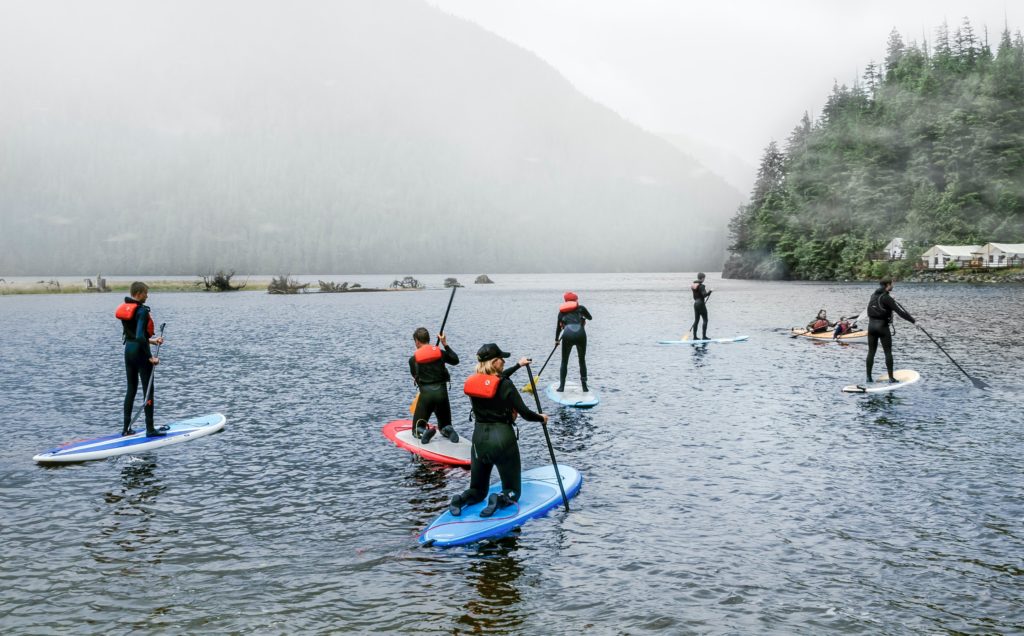
Choose Your Paddle Board
There are many different types of paddle boards available. Ranging from inflatable boards to hard top boards that come in different shapes and sizes.
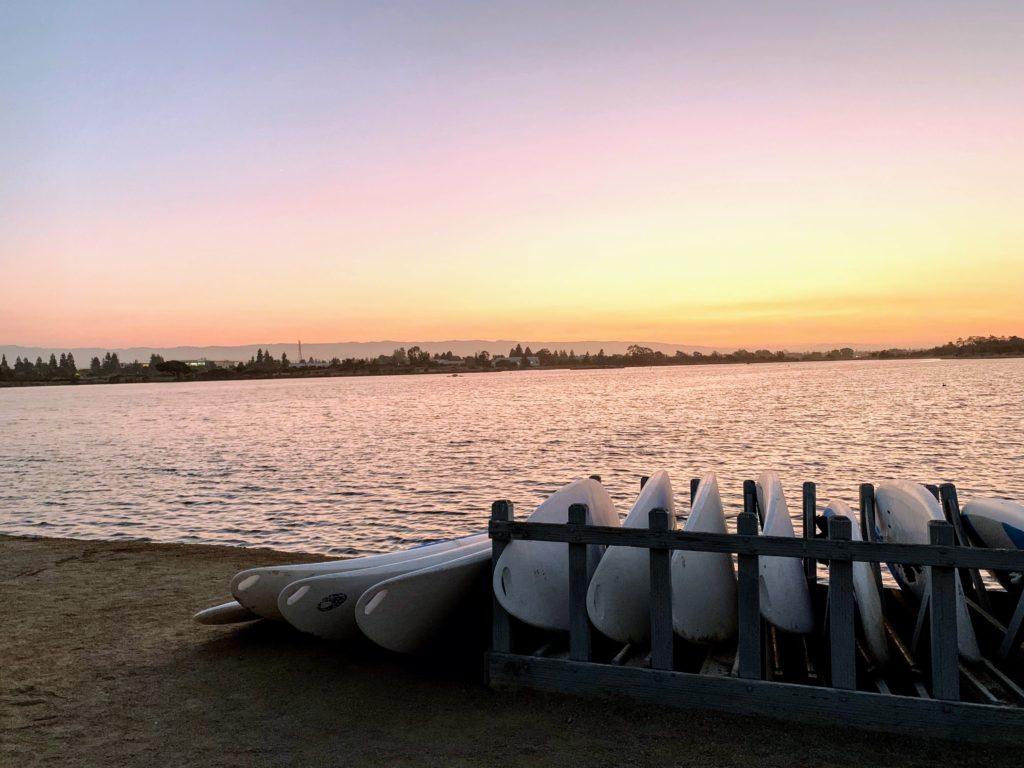
For beginners, we use the saying “the bigger the board, the more stable”. We recommend a broader paddle board for beginners. The question is if you want to invest in an inflatable or a hard board. Read on to see the pros of each to help you with your decision.
Benefits of an inflatable board:
- Easy to transport.
- Take up little storage space.
- Durable.
Benefits of hardboard:
- With more styles and designs, it is easy to find a board that suits you.
- Faster than inflatable boards.
Before buying your first stand up paddle board, it's a must to check these crucial factors that will make your decision worth it and save you from future hassle.
Standing Up
It is not a bad idea to start on your knees – if this is comfortable for you. Starting out on your knees gives you a great feel for the sport. You can feel how the board moves under your body weight and are less likely to fall off your board into the water.
The goal is to graduate from kneeling to standing up. When you feel confident that you have your balance on your knees, stand up. You want to be in the centre of your board. Most boards have a carrying handle in the centre. Position yourself over the carrying handle.
Moving slowly and with one foot at a time – no popping up – rise from a kneeling position to a squat. Your feet should be approximately shoulder-width apart.
Keep your centre of gravity low by keeping your knees gently bent as you rise up out of your squat with a straight back. Keep your feet facing the front of your board and look forward to maintain your balance.
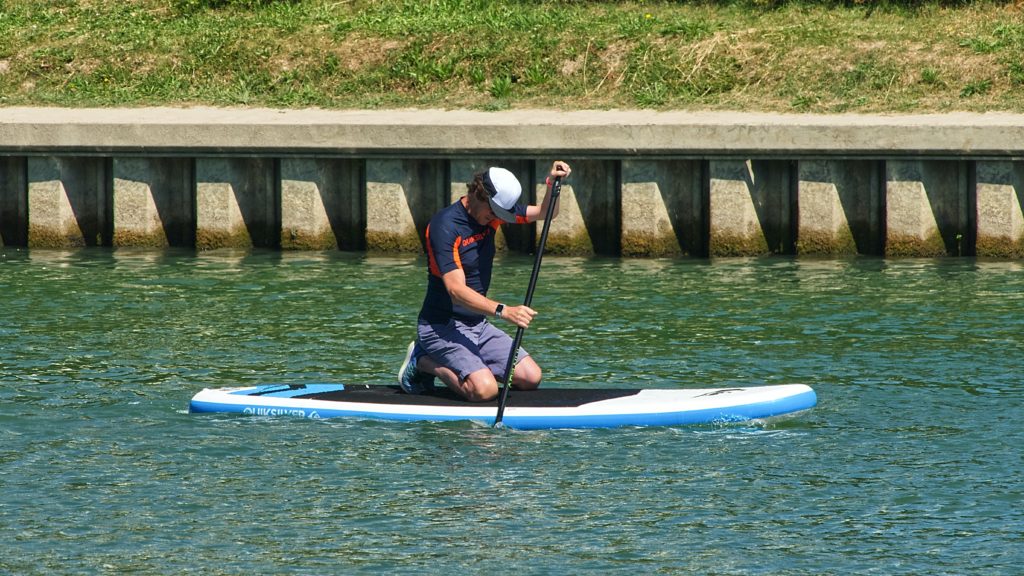
Keep your core nice and tight to maintain this strong posture, by keeping your core engaged you will also stay balanced.
Holding Your Paddle
Correctly holding your paddle is a SUP technique that is easy to learn. Place one hand on the handle at the top of your paddle and the other at the bottom of the paddle. You want to keep both your arms straight.
Adjust your arms or the length of your paddle to ensure you are not bending your arms. Keep the blade of the paddle facing away from you – many people make the error of holding the blade of the paddle toward them, this makes paddling more difficult.
Moving Forward On Your SUP
To propel your SUP forward you need to use your paddle. Traditionally the forward strokes consist of 5 easy moves.
- Reaching – Bend at the hips and reach your paddle forward into the water as far as possible.
- Submerge – Put our paddle into the water.
- Pull – Using the power from your arm that is at the top of the paddle pull the paddle towards yourself.
- Exit– Once the paddle is next to you, pull it out of the water. Make sure the blade of the paddle is at 90 degrees and it comes out of the water at its narrow side.
- Repeat – Bring the paddle back toward the front of the board and repeat.
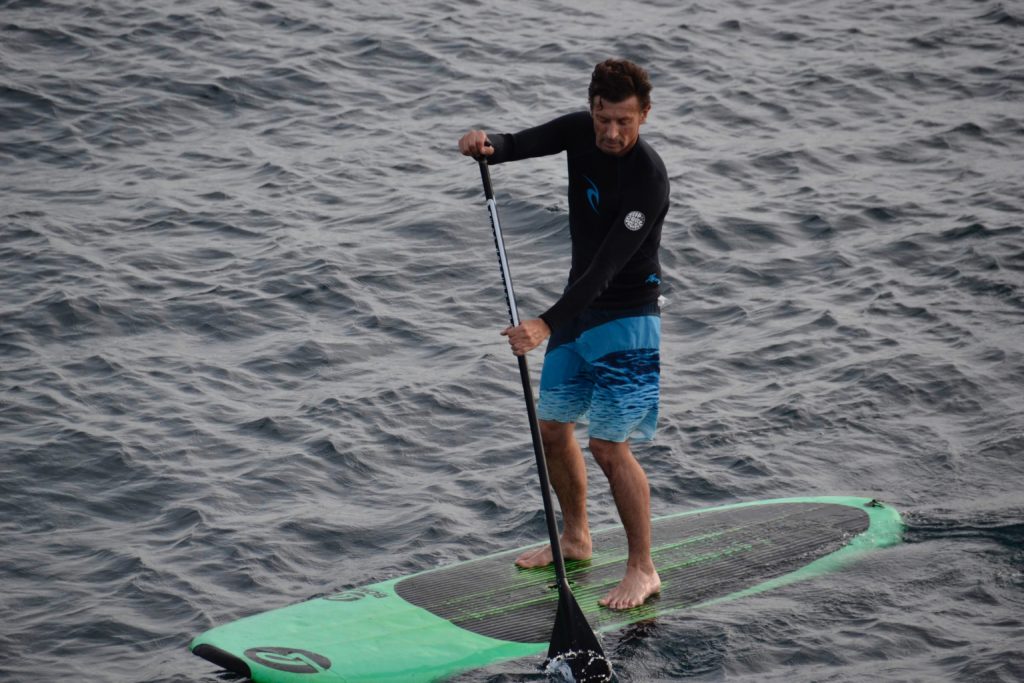
You will feel the board move forward after your first stroke. Switch sides after a couple of paddles to continue going straight. If you are wanting to turn around continue to paddle on one side of the board and you will see your course change to either the left or right.
To ensure that you do not exhaust your arms too much, try to keep your core and legs engaged when paddling. You will not only move more swiftly through the water, but you will feel a full-body workout.
Slowing Down
There are no breaks on a paddle board. Your paddle is both your accelerator and your breaks. To slow down or even stop your board you use a reverse stroke. A reverse stroke is easy to achieve. Simply reach your paddle toward the back of your board, put your paddle into the water and pull it toward you.
Turning Around
You will use a sweeping stroke to turn your board. You could paddle on one side until your board turns, however, this uses a lot of energy and takes up more space. A sweeping stroke helps you turn more efficiently while keeping momentum. To turn around, reach the paddle forward as you do for a forward stroke. Move your paddle in a wide arc next to your board.
Bring your paddle all the way around to the back of your board before removing it from the water. Doing this on the left side of your board will move your board to the right and vice versa.
Safety First
As with any water sport, there are some important safety tips to remember.
- You should be able to swim if you are going to SUP. You could easily find yourself in deep waters and if you fall off your board you need to feel confident in the water to swim to safety.
- Even if you are a fantastic swimmer, always wear a life jacket. Accidents happen and you will be grateful that you have a life jacket on if you find yourself in a dangerous situation.
- Wear sunscreen.
- Dress appropriately. We suggest that you consider the weather and the water temperature when deciding what to wear. You want to feel comfortable and warm especially if you fall into the water.
- Never paddle alone when you are starting out. Take a buddy with you or a professional.
- Only ever paddle in water conditions that you would swim in. Calm, flat water on a windless day is ideal.
- Start with paddling in a lake or a river before attempting the ocean. Ocean waves and currents are more difficult to navigate for a beginner.
- If you get nervous or weather conditions suddenly change, drop to your knees and paddle to the nearest shoreline.
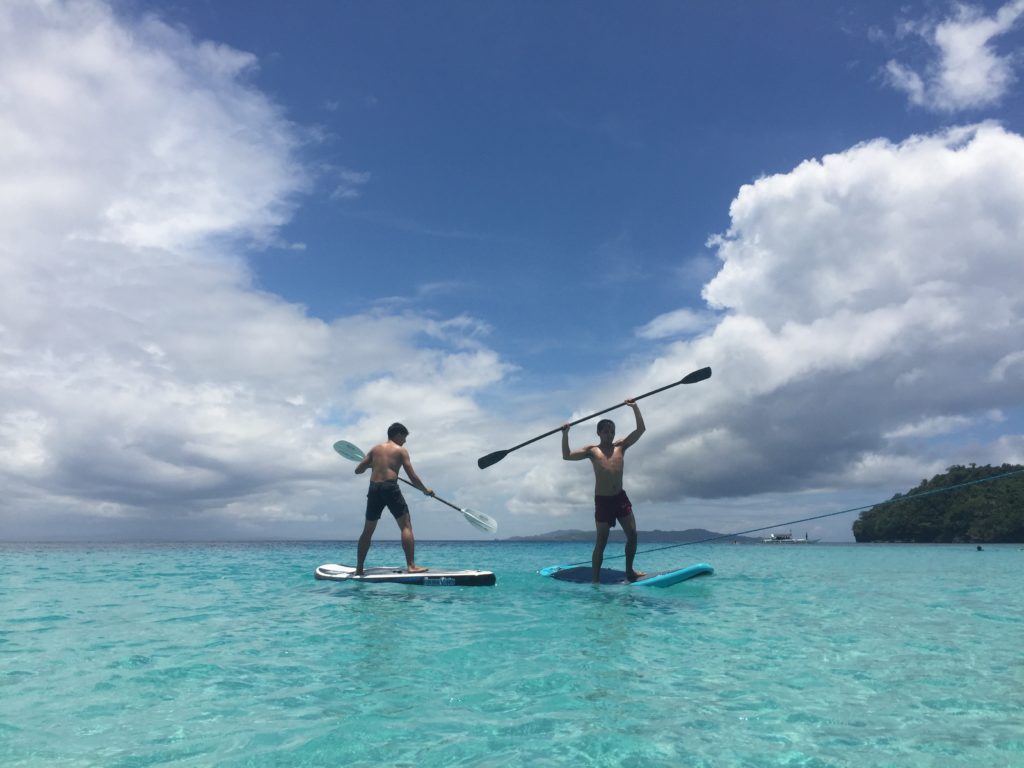
The most important tip we can give is to have fun. Smile, be prepared, and have fun out on your paddle board. Practice is a sure way to master the paddle board, so keep at it and in no time you will be confidently taking to the water with your paddle board.
